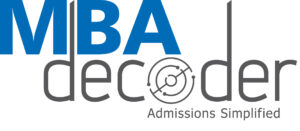“But I really must join business school this year”.
We hear this sentiment from eager b-school applicants every year, after they have missed the deadlines for MBA programs starting in Fall, or have been unsuccessful in their Fall applications.
While a Fall intake is prevalent in most business schools, there is a small list of programs that also start in January or March. This is more common in Europe as opposed to the USA where only Columbia Business School has two intakes.
In this article, we have attempted to create an exhaustive list of MBA programs that have two intakes:
Columbia Business School, New York: CBS offers intakes in January and August every year. The two intakes are identical in the admissions process and the academic rigour. What differs is the lack of summer internship in the January intake and hence the duration of the MBA.
The January MBA is best suited for students whose career goals do not demand a summer internship and hence they can complete their MBAs in 16 months. This attracts students who wish to remain in the same industry, entrepreneurs, and students in family businesses.
70% of the CBS students enter the August intake, which is of 20 months’ duration. The August entry track is like any regular US MBA that begins in Fall and has a 3-month internship in the summer of next year (during the third term).
The January track students join during the spring and fast track their core curriculum by completing it during the summer when the August Entry class is doing their summer internships. They join this August entry class in the fall of the second year, and then onwards the two tracks become one.
From the application standpoint: CBS has a rolling application deadline. You can apply for both intakes once the application opens in June. However, the January intake applicants can apply no later than the October deadline and they are not eligible for the merit fellowship. August Entry applicants can apply early decision by the October deadline or regular decision by the January deadline.
The INSEAD MBA is a short, 10-month program. In this supercharged, accelerated MBA program, the January intake will give you a breather as it features a two-month summer internship that is not built into the September intake. An internship can be crucial for effecting an industry change – for certain industries such as consulting and financial service, an internship plays an important role in getting a post MBA job offer.
From the application standpoint: INSEAD has 4 deadlines for each intake. The September intake deadlines begin a year ahead- in the September previous to program commencement and end in March. The January intake deadlines start in the previous March and end in August.
IE International MBA’s two intakes are identical in program structure. What differs is some of the electives available as they are subjective to the demand. Also, if you are interested in taking the IMBA in practice during the lab period, January would be a better option. The other difference would be the dual degree options and timeline will be different for September and January intake.
From the application standpoint: IE has rolling deadlines, so you are likely to catch some deadlines through the year. Once admitted, you can defer your admission to another intake, which could be an advantage if your plans change for some reason.
At HEC Paris, France there is no difference between the two intakes.
From the application standpoint: January intake deadlines open in January the previous year and go on until November. For the September intake, deadlines open in June and close by November. The window to apply for the September intake is only 5 months, whereas its 9 months for the January intake.
At Edhec, Spain while students of both intakes study exactly the same curriculum, the order is different. September students join the January students and study with them until the latter complete their course in December. They are then joined by the new January class and study together with them until they graduate in June. In effect there are always two cycles of students in rotation in a class (there are 150 per class). The advantage is that you build a network with double the number of students.
From the application standpoint: Apply by June 30th for September intake and November 15th for January intake.
At Schulich, York University also there is absolutely no difference in the two intakes expect for a different start date. Winter is a smaller intake and the adcom accepts less than half the number of students in Fall intake.
From the application standpoint: The January intake opens in August and there is a deadline every month, until November (4 deadlines). The September intake has 3 deadlines in January, February, and April.
The two intake format gives applicants the chance to join business school at their convenient time. It also allows them an opportunity to double their network by studying half the MBA term with a new set of students.
There is an important factor you should keep in mind while deciding upon the timing of your MBA. Certain industries recruit at specific times of the year only, so hitting the application submit button at the right time will ensure you are riding the right bus to career greatness.
